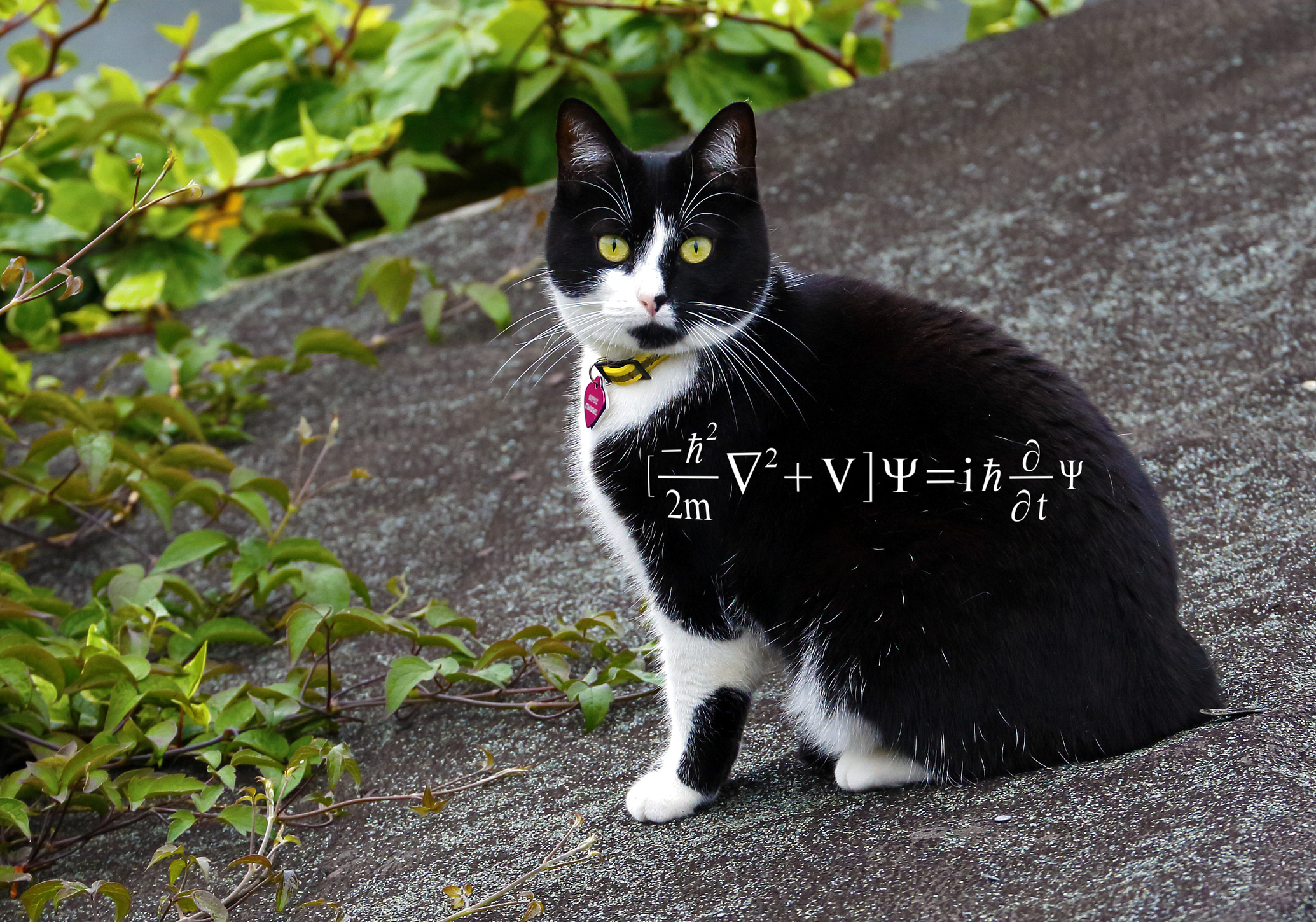
'Spooky action at a distance' can lead to a multiverse. Here's how.
A new reality might be produced by every possible quantum interaction.

Some interpretations of quantum mechanics propose that our entire universe is described by a single universal wave function that constantly splits and multiplies, producing a new reality for every possible quantum interaction. That's quite a bold statement. So how do we get there?
One of the earliest realizations in the history of quantum mechanics is that matter has a wave-like property. The first to propose this was French physicist Louis de Broglie, who argued that every subatomic particle has a wave associated with it, just like light can behave like both a particle and a wave.
Other physicists soon confirmed this radical idea, especially in experiments where electrons scattered off a thin foil before landing on a target. The way the electrons scattered was more characteristic of a wave than a particle. But then, a question came up: What, exactly, is a wave of matter? What does it look like?
Related: Do We Live in a Quantum World?
Early quantum theorists such as Erwin Schrödinger believed that particles themselves were smeared out over space in the shape of a wave. He developed his famous equation to describe the behavior of those waves, which is still used today. But Schrödinger's idea flew in the face of more experimental tests. For example, even though an electron acted like a wave midflight, when it reached a target, it landed as a single, compact particle, so it couldn't be physically extended in space.
Instead, an alternative interpretation began to gain ground. Today, we call it the Copenhagen interpretation of quantum mechanics, and it is by far the most popular interpretation among physicists. In this model, the wave function — the name physicists give to the wave-like property of matter — doesn't really exist. Instead, it's a mathematical convenience that we use to describe a cloud of quantum mechanical probabilities for where we might find a subatomic particle the next time we go looking for it.
Chains of entanglement
The Copenhagen interpretation has several problems, however. As Schrödinger himself pointed out, it's unclear how the wave function goes from a cloud of probabilities before measurement to simply not existing the moment we make an observation.
Get the Space.com Newsletter
Breaking space news, the latest updates on rocket launches, skywatching events and more!
So perhaps there's something more meaningful to the wave function. Perhaps it's as real as all of the particles themselves. De Broglie was first to propose this idea, but he eventually joined the Copenhagen camp. Later physicists, like Hugh Everett, looked at the problem again and came to the same conclusions.
Making the wave function be a real thing solves this measurement problem in the Copenhagen interpretation, because it stops measurement from being this super-special process that destroys the wave function. Instead, what we call a measurement is really just a long series of quantum particles and wave functions interacting with other quantum particles and wave functions.
If you build a detector and shoot electrons at it, for example, at the subatomic level, the electron doesn't know it's being measured. It just hits the atoms on the screen, which sends an electrical signal (made of more electrons) down a wire, which interacts with a display, which emits photons that hit the molecules in your eyes, and so on.
In this picture, every single particle gets its own wave function, and that's it. All of the particles and all of the wave functions just interact as they normally do, and we can use the tools of quantum mechanics (like Schrödinger's equation) to make predictions for how they'll behave.

The universal wave function
But quantum particles have a really interesting property because of their wave function. When two particles interact, they don't just bump into each other; for a brief time, their wave functions overlap. When that happens, you can't have two separate wave functions anymore. Instead, you must have a single wave function that describes both particles simultaneously.
When the particles go their separate ways, they still maintain this united wave function. Physicists call this process quantum entanglement — what Albert Einstein referred to as "spooky action at a distance."
When we retrace all the steps of a measurement, what comes out is a series of entanglements from overlapping wave functions. The electron entangles with the atoms in the screen, which entangle with the electrons in the wire, and so on. Even the particles in our brains entangle with Earth, with all the light coming and going from our planet, all the way up to every particle in the universe entangling with every other particle in the universe.
With every new entanglement, you have a single wave function that describes all of the combined particles. So the obvious conclusion from making the wave function real is that there is a single wave function that describes the entire universe.
This is called the "many worlds" interpretation of quantum mechanics. It gets this name when we ask what happens during the process of observation. In quantum mechanics, we're never sure what a particle will do — sometimes it may go up, sometimes it may go down, and so on. In this interpretation, every time a quantum particle interacts with another quantum particle, the universal wave function splits into multiple sections, with different universes containing each of the different possible results.
And this is how you get a multiverse. Through the mere act of quantum particles entangling with each other, you get multiple copies of the universe created over and over again all the time. Each one is identical, save for the tiny difference in some random quantum process. That means there are multiple copies of you reading this article right now, all exactly the same except for some tiny quantum detail.
This interpretation has difficulties as well — for example, how does this splitting actually unfold? But it's a radical way to view the universe and a demonstration of just how powerful quantum mechanics is as a theory — what started as a way to understand the behavior of subatomic particles may govern the properties of the entire cosmos.
Follow us on Twitter @Spacedotcom or on Facebook.
Join our Space Forums to keep talking space on the latest missions, night sky and more! And if you have a news tip, correction or comment, let us know at: community@space.com.

Paul M. Sutter is an astrophysicist at SUNY Stony Brook and the Flatiron Institute in New York City. Paul received his PhD in Physics from the University of Illinois at Urbana-Champaign in 2011, and spent three years at the Paris Institute of Astrophysics, followed by a research fellowship in Trieste, Italy, His research focuses on many diverse topics, from the emptiest regions of the universe to the earliest moments of the Big Bang to the hunt for the first stars. As an "Agent to the Stars," Paul has passionately engaged the public in science outreach for several years. He is the host of the popular "Ask a Spaceman!" podcast, author of "Your Place in the Universe" and "How to Die in Space" and he frequently appears on TV — including on The Weather Channel, for which he serves as Official Space Specialist.









